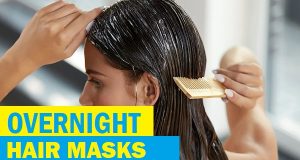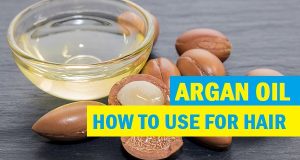
Home Remedies For Seborrheic Dermatitis: Natural Solutions for a Healthy Scalp
Dealing with seborrheic dermatitis can be challenging, especially when it affects your scalp. In this comprehensive guide, we will explore seborrheic dermatitis home remedies, offering natural solutions to alleviate itching, flaking, and inflammation. Seborrheic dermatitis is a common skin condition characterized by red, itchy, and scaly patches, often occurring on the scalp. With the help of simple ingredients and expert insights, we’ll discover ways to manage seborrheic dermatitis effectively and promote a healthy scalp, all from the comfort of your home.
What is Seborrheic Dermatitis?
Seborrheic dermatitis is a common and chronic skin condition that primarily affects areas of the body rich in sebaceous glands, such as the scalp, face, and upper chest. It presents as red, inflamed, and flaky patches on the skin, often accompanied by itching and irritation. The exact cause of seborrheic dermatitis remains unclear, but it is believed to involve various factors, including the overgrowth of a yeast called Malassezia, individual susceptibility, and environmental triggers.
Causes of Seborrheic Dermatitis:
Malassezia Yeast: The yeast Malassezia, which naturally resides on the skin, is considered a key factor in the development of seborrheic dermatitis. In susceptible individuals, an overgrowth of this yeast can lead to an inflammatory response, resulting in the characteristic symptoms.
Oil Production: Seborrheic dermatitis tends to occur in areas where sebaceous glands are more prominent. These glands produce an oily substance called sebum, which may exacerbate the yeast’s growth and inflammation.
Individual Susceptibility: Some individuals are more genetically predisposed to seborrheic dermatitis. Factors such as a weakened immune response or a family history of the condition can increase the likelihood of its development.
Hormonal Changes: Fluctuations in hormone levels, particularly during puberty, pregnancy, or with certain medical conditions, can contribute to seborrheic dermatitis.
Environmental Triggers: Certain environmental factors, such as cold and dry weather, stress, and allergens, may trigger or worsen seborrheic dermatitis flare-ups.
Role of Malassezia
Malassezia is a type of yeast that naturally resides on the human skin. It plays a significant role in the development of seborrheic dermatitis, especially when it experiences overgrowth. Under normal circumstances, Malassezia serves a beneficial function by breaking down the skin’s natural oils (sebum). However, in some individuals, an excessive proliferation of Malassezia can lead to an inflammatory response, triggering seborrheic dermatitis.
How Malassezia Contributes to Seborrheic Dermatitis:
Malassezia feeds on the skin’s sebum, and when its population grows, it consumes more sebum than usual. This excessive consumption leads to an accumulation of fatty acids, which can irritate the skin and provoke inflammation.
The breakdown of sebum by Malassezia results in the release of oleic acid and other irritants. These substances trigger an inflammatory response from the immune system, causing redness, itching, and flaking.
The inflammation caused by Malassezia can disrupt the skin’s natural barrier function. This disruption weakens the skin’s defenses against external irritants, making it more susceptible to further irritation.
Symptoms of Seborrheic Dermatitis:
Seborrheic dermatitis commonly occurs in infants (known as “cradle cap”), and while it can persist into adulthood, it often fluctuates in severity over time. While the condition is not contagious, its appearance may cause self-consciousness or discomfort.
Seborrheic dermatitis on the scalp, commonly known as dandruff, is a prevalent manifestation of this skin condition. Recognizing the signs and symptoms of seborrheic dermatitis on the scalp is crucial for accurate diagnosis and appropriate management.
Flaky Scalp: The most noticeable sign is the presence of white or yellowish flakes, similar in appearance to dandruff. These flakes are often more prominent in the hair and may fall onto the shoulders.
Redness and Inflammation: The scalp may appear reddened or inflamed, especially in areas with excessive flaking and itching.
Itching and Irritation: Seborrheic dermatitis on the scalp is typically associated with itching and discomfort. Scratching the affected area can worsen inflammation.
Greasy or Oily Appearance: The scalp may also feel greasy or oily due to the overproduction of sebum, especially during active flare-ups.
Hair Loss (Rare): In severe cases, persistent inflammation can contribute to temporary hair loss, but hair usually regrows once the condition is managed.
It’s important to note that other conditions, such as psoriasis or fungal infections, may have similar symptoms to seborrheic dermatitis on the scalp. If there is uncertainty about the diagnosis or the condition does not respond to over-the-counter treatments, it is advisable to consult a dermatologist for a proper evaluation and personalized treatment plan.
Seborrheic dermatitis is a common skin condition characterized by red, inflamed, and flaky patches on the scalp, face, and other sebaceous gland-rich areas. The overgrowth of the yeast Malassezia, individual susceptibility, and environmental triggers are believed to play key roles in its development. Identifying the symptoms and understanding the role of Malassezia can help individuals manage seborrheic dermatitis more effectively, leading to improved skin health and overall well-being. If you suspect you have seborrheic dermatitis or experience persistent symptoms, seek guidance from a healthcare professional for a proper diagnosis and appropriate treatment or use home remedies using natural ingredients.
Natural Remedies for Seborrheic Dermatitis
Seborrheic dermatitis is a common skin condition that causes red, itchy, and flaky patches on the scalp, face, and other areas of the body. While medical treatments are available, some individuals may prefer to explore natural home remedies to manage the symptoms. In this article, we will discuss several effective home remedies for seborrheic dermatitis, including the ingredients required, their preparation methods, and how to apply them individually for soothing relief.
1. Coconut Oil
Ingredients:
Virgin coconut oil
Preparation:
Warm the coconut oil slightly until it becomes liquid.
Application:
Apply the warm coconut oil directly to the affected areas of the skin.
Gently massage the oil into the skin using circular motions.
Leave the oil on for at least 30 minutes or overnight for maximum benefit.
Rinse off with a mild shampoo if applied to the scalp.
Coconut oil’s anti-inflammatory and moisturizing properties can help reduce redness and flakiness associated with seborrheic dermatitis.
2. Apple Cider Vinegar
Ingredients:
Raw, unfiltered apple cider vinegar
Water
Preparation:
Mix equal parts of apple cider vinegar and water in a bowl.
Application:
Dip a cotton ball into the diluted apple cider vinegar solution.
Gently apply the solution to the affected areas of the skin.
Leave it on for 5-10 minutes.
Rinse with water and pat dry.
Apple cider vinegar has antimicrobial properties that can help combat the overgrowth of yeast, which is often associated with seborrheic dermatitis.
3. Aloe Vera Gel
Ingredients:
Fresh aloe vera leaf (or store-bought aloe vera gel)
Preparation:
If using a fresh aloe vera leaf, cut it open and extract the gel from the leaf.
Application:
Apply the aloe vera gel directly to the affected areas.
Gently massage the gel into the skin until absorbed.
Leave it on for 20-30 minutes.
Rinse with water and pat dry.
Aloe vera’s soothing and anti-inflammatory properties can provide relief from itching and irritation caused by seborrheic dermatitis.
4. Tea Tree Oil
Ingredients:
Tea tree essential oil
Carrier oil (such as coconut oil or jojoba oil)
Preparation:
Dilute a few drops of tea tree essential oil in a carrier oil.
Application:
Conduct a patch test before applying the diluted tea tree oil to ensure no skin irritation occurs.
If no irritation, apply the diluted oil to the affected areas using a cotton ball or clean fingers.
Leave it on for 15-20 minutes or overnight.
Rinse with water and pat dry.
Tea tree oil’s antifungal properties can help combat the yeast that contributes to seborrheic dermatitis and reduce inflammation.
5. Turmeric Paste
Ingredients:
Turmeric powder
Water or coconut oil (for a paste)
Preparation:
Mix turmeric powder with water or coconut oil to form a thick paste.
Application:
Apply the turmeric paste to the affected areas of the skin.
Leave it on for 20-30 minutes.
Rinse with water and pat dry.
Turmeric’s anti-inflammatory and antimicrobial properties can help reduce redness and alleviate symptoms associated with seborrheic dermatitis.
6. Oatmeal Bath
Ingredients:
Rolled oats
Preparation:
Grind the rolled oats into a fine powder using a blender or food processor.
Application:
Add the ground oatmeal to a warm bath.
Soak in the oatmeal-infused bath for 15-20 minutes.
Gently pat the skin dry after the bath.
An oatmeal bath can soothe inflamed and itchy skin, providing relief from the discomfort of seborrheic dermatitis.
7. Honey and Olive Oil Mask
Ingredients:
Raw Honey
Extra virgin olive oil
Preparation:
Mix equal parts of honey and olive oil to form a smooth paste.
Application:
Apply the honey and olive oil mask to the affected areas of the skin.
Leave it on for 20-30 minutes.
Rinse with water and pat dry.
Honey’s antibacterial properties and olive oil’s moisturizing effects can help soothe and hydrate the skin affected by seborrheic dermatitis.
8. Probiotic Yogurt Mask
Ingredients:
Plain, unsweetened yogurt with live cultures
Application:
Apply a thick layer of probiotic yogurt to the affected areas of the skin.
Leave it on for 20-30 minutes.
Rinse with water and pat dry.
Probiotic yogurt contains beneficial bacteria that can help restore the natural balance of the skin’s microbiome, reducing inflammation and irritation.
Precautions
Perform a patch test before trying any new remedy to check for potential allergies or skin reactions.
If your symptoms persist or worsen, consult a healthcare professional for a proper diagnosis and treatment plan.
Seborrheic dermatitis can be managed effectively with these natural home remedies. However, if your symptoms persist or worsen, it’s essential to consult a dermatologist or healthcare provider for a proper diagnosis and personalized treatment plan. Regularly maintaining good skin hygiene and making lifestyle adjustments, such as managing stress and avoiding triggers, can also contribute to the overall management of this condition. Remember to be consistent with your chosen home remedy and practice patience, as natural remedies may take time to show significant results.
Expert Tips for Managing Seborrheic Dermatitis at Home
Avoiding Triggers
Identify and avoid triggers that worsen seborrheic dermatitis, such as stress, certain hair products, and cold weather.
Regular Scalp Care
Establish a regular scalp care routine to keep seborrheic dermatitis symptoms under control and maintain scalp health.
Stay Hydrated
Drinking enough water can help keep the scalp and skin hydrated, potentially reducing seborrheic dermatitis flare-ups.
Frequently Asked Questions (FAQs)
Q 1: Can seborrheic dermatitis be cured with home remedies?
While home remedies can help manage symptoms, seborrheic dermatitis is a chronic condition that requires ongoing management.
Q 2: How often should I use home remedies for seborrheic dermatitis?
The frequency of using home remedies depends on the severity of symptoms and individual preferences. Start with once or twice a week and adjust as needed.
Q 3: Is seborrheic dermatitis contagious?
No, seborrheic dermatitis is not contagious and cannot be spread from person to person.
Q 4: Can certain foods trigger seborrheic dermatitis?
In some cases, certain foods may exacerbate seborrheic dermatitis symptoms. Pay attention to your diet and notice any potential triggers.
Q 5: Can stress worsen seborrheic dermatitis?
Yes, stress can be a contributing factor to seborrheic dermatitis flare-ups. Practice stress management techniques to help reduce symptoms.
Q 6: Should I consult a dermatologist for seborrheic dermatitis?
If home remedies do not provide sufficient relief or if symptoms worsen, it’s advisable to seek guidance from a dermatologist.
Embrace the power of nature and take charge of your scalp health with these seborrheic dermatitis home remedies. From tea tree oil to chamomile tea rinses, you can soothe and manage seborrheic dermatitis effectively from home. Remember to be consistent with your chosen remedies and follow expert tips for a healthier scalp.
Revel in the joy of a calmer, flake-free scalp and regain your confidence with these natural solutions.
 Tips and Beauty Site about Skin care, Hair care, Health, weight loss and lifestyle tips
Tips and Beauty Site about Skin care, Hair care, Health, weight loss and lifestyle tips






